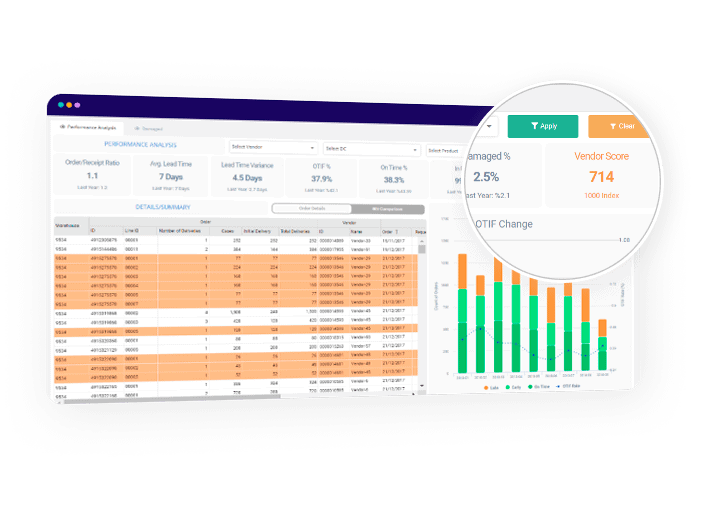We all have an unforgettable childhood novel. Mine is “The Three Musketeers,” written by Alexandre Dumas. The story revolves around the adventures of three heroic young musketeers fighting for justice and honor. Their motto, “All for one and one for all,” is more relevant than ever in today’s business world, especially in supply chain management, where collaboration is key.
In Dumas’ tale, the musketeers pursue a common goal instead of their ambitions. When it comes to business, companies often aim to maximize their objectives, such as sales and margin rates. However, recent disruptions have shown that those who adopt a musketeer mentality with their business partners do better than the rest.
This blog post explores how supply chain planning leaders and decision-makers can embrace the musketeer spirit through vendor collaboration, driving business agility, reducing costs, and creating a competitive advantage in the ever-evolving supply chain landscape.
The Power of Collaboration in Supply Chains
Recent events have highlighted the critical importance of strong partnerships in supply chain management. According to a multi-industry McKinsey survey, companies that regularly collaborated with suppliers showed higher growth, lower operating costs, and greater profitability than their industry peers.
Collaboration brings numerous benefits, including improved supply chain visibility, increased operational efficiency, enhanced ability to respond to disruptions, better inventory management, and reduced overall costs. The old saying goes, “All for one and one for all.” In today’s business world, your success is directly related to the performance of your stakeholders. Embracing this spirit of collaboration can lead to a more efficient and cost-effective supply chain, giving you a competitive edge in the market.
Supply Chain Agility and Resilience with Vendor Collaboration
Vendor collaboration is a joint effort that creates a competitive advantage for suppliers and buyers. It can be approached from operational and strategic perspectives. Types of collaboration include real-time visibility on purchase order status, joint planning for promotions and marketing campaigns, and collaborative medium-to-long-term demand planning.
Effective vendor collaboration offers numerous benefits:
- Reduced overall costs and inefficiencies
- Improved supply chain visibility
- Enhanced responsiveness to disruptions
- Better alignment of supply with customer demand
- Increased operational efficiency
The Role of AI and Automation in Vendor Collaboration

As supply chain complexities increase, artificial intelligence (AI) and automation become game-changers in vendor collaboration. These technologies offer unprecedented opportunities for supply chain leaders to enhance efficiency, accuracy, and decision-making. Here are a few examples of how AI and Automation enhance vendor collaboration, reassuring you of the potential for technological advancement in your supply chain management:
- Predictive Analytics: AI algorithms can analyze historical data, market trends, and external factors to forecast demand accurately. This allows for proactive collaboration with vendors, optimization of inventory levels, and reduction of the risk of stockouts or overstock situations.
- Automated Order Management: Machine learning models can automate purchase order creation and management, considering lead times, demand fluctuations, and vendor performance. This reduces manual errors and speeds up the procurement process.
- Real-time Supply Chain Visibility: IoT sensors and AI-powered analytics provide real-time tracking of goods throughout the supply chain. This enhanced visibility allows for immediate action in case of delays or disruptions.
- Intelligent Supplier Selection: AI can analyze vast amounts of data to recommend the most suitable suppliers based on various criteria such as cost, quality, reliability, and sustainability.
Implementing Effective Vendor Collaboration
Visibility on Purchase Orders:
Tracking lead times and vendor scores provides greater operational visibility. This enables organizations to evaluate supplier performance through metrics like OTIF (On Time, In Full) rates and vendor scorecards.
Planning Promotions and Marketing Campaigns:
Sharing demand-adjusted forecasts with vendors allows them to plan production and shipments accordingly, improving promotion performance and reducing the risk of stockouts.
Collaborative Demand Planning:
When manufacturers and distributors work together on demand planning, they can achieve more accurate forecasts, reduce inventory, and improve communication. This collaboration enables flexibility in managing purchase orders and meeting exact demand requirements.
Overcoming Collaboration Challenges
While the benefits are clear, implementing vendor collaboration can face hurdles such as resistance to change in established work methods, need for alignment in mindsets and goals, and time and effort required for implementation.
The key to overcoming these challenges is choosing the right collaboration platform. A practical solution should be user-friendly with an intuitive interface, agile and compatible with existing management tools, automated to minimize human error, and cost-effective while enhancing performance.
From Paperwork to Automation: Electronic Data Interchange
Let’s say a supermarket needs to order toothpaste from an FMCG vendor. The supermarket should create a purchase order and send it to the vendor via email or fax. Although email is an electronic approach, the documents exchanged through email must still be managed by employees rather than computers.
People slow down the processing of documents, which makes them prone to error. If the planner was to make a mistake and failed to realize it instantly, then the supermarket might be out of stock for the toothpaste that week. Unlike email and fax, processes start immediately with no human touch when data and documents flow directly to the receiver’s computer via an API.
Today, leading companies use standards-based data exchange technologies for:
- Lower operational costs
- More secure transactions
- Quicker and more efficient communication
- Elimination of manual procedures
- Automated and smart processes
If such a system sounds tempting, but you do not have millions to invest, Vendor Collaboration is your answer.
Solvoyo’s Vendor Collaboration Solution
Solvoyo’s Vendor Collaboration platform offers a powerful solution to modern supply chain management challenges, enabling businesses to thrive in an interconnected world. With Solvoyo Vendor Collaboration, you can collaborate on a cloud-based platform without a heavy investment in IT. Key features include:
- Cloud-based platform requiring minimal IT investment
- Real-time visibility across the supply chain ecosystem
- Comprehensive vendor performance assessment
- Tactical and strategic decision support
- Seamless collaboration with stakeholders
The platform enables supply chain leaders to focus on high-level strategic decisions rather than day-to-day operational issues.
Ready to transform your supply chain through effective vendor collaboration? Explore Solvoyo’s innovative solutions and take the first step towards supply chain excellence today.

Ready to transform your supply chain through effective vendor collaboration? Explore Solvoyo’s innovative solutions and take the first step towards supply chain excellence today.









